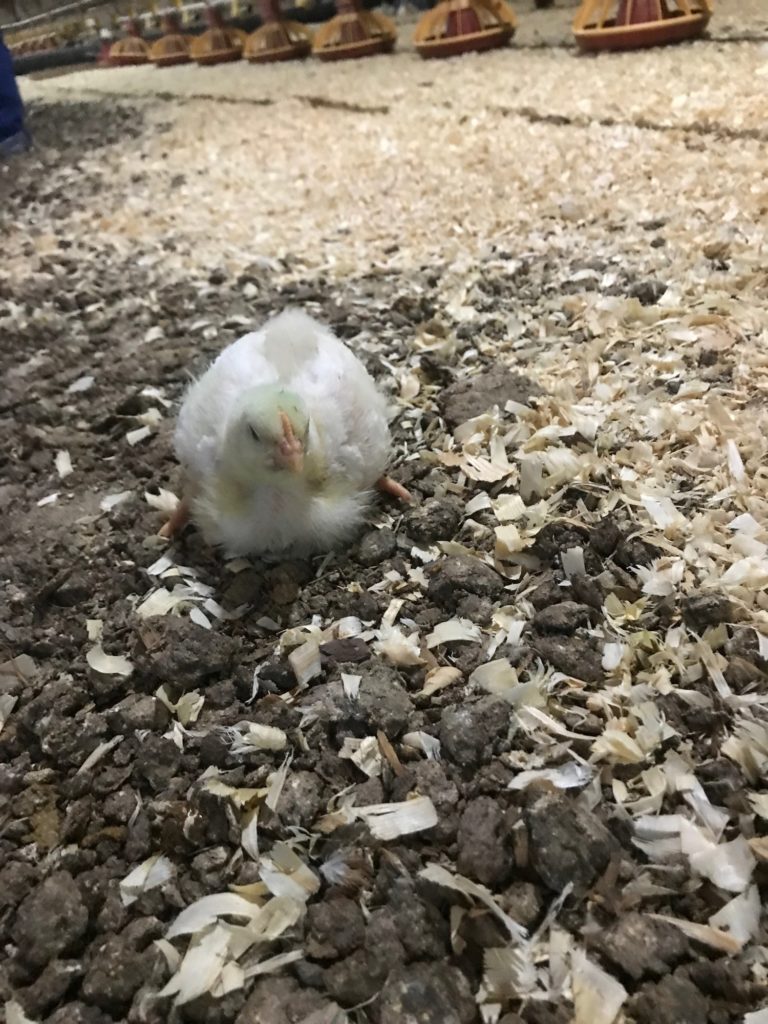Checking In with Chicken

This blog post was originally drafted and posted by Nicole Rodriguez, Registered Dietitian, Nutritionist and NASM-CPT, of Enjoy Food, Enjoy Life. Check out the original blog post, and Nicole’s Twitter and Instagram pages.
They say the bird’s the word, but what’s the good word on how this popular protein makes its way from farm to fork? I caught up with some chicken farmers and their feathered friends in Maryland, and feel confident the voyage is humane. More on my trip to the Delmarva peninsula, here.
Disclosure: I was compensated by the ChickenCheck.in to share my thoughts on the farm tour experience provided by their agency. Additionally, my room, board, and travel expenses were covered. As always, opinions are my own.
First of all, when you think “chickens,” do you think of Maryland? I certainly didn’t, but it turns out the Delmarva area is home to six poultry purveyors, including Perdue. And while you might see one of these big names at the supermarket, behind all of them are farms – 98% of which are family-owned. I was lucky enough to visit Deerfield Farms, owned and operated by (single) mom, Jennifer Rhodes. In addition to hosting an informal roundtable featuring local dietitian/farmer Jenny Schmidt, members from the Maryland Cooperative Extension Poultry department, and Tom Super from the National Chicken Council, Jenny (as she’s known) graciously allowed us to visit with AND photograph her flock – which is processed and sold by Allen Harim Foods. Oh, and she and her mom treated us all to a stunning spread of a lunch.
Here’s the deal: Americans eat A LOT of chicken. According to the National Chicken Council, the per capita estimate for 2017 is around 92 pounds per person. And while certain labels might tug at the heartstrings and lead you to believe you’re making a better choice for your family, the truth is that ALL chicken options are nutritious and tasty. Below, some of the myths about our favorite bird, dispelled.
MYTH: YOUR CHICKEN IS ON A ROID CYCLE
Fact: yes, chickens are larger now than they were fifty years ago. But these beefed up chickens owe their improved musculature to better nutrition, smarter breeding, and care from veterinarians. Hormones (and steroids) are banned from use in poultry in the United States, and have been since the 1950s.
Takeaway: Don’t believe the label hype on this one. All poultry available at retail is free of added steroids and hormones (note that naturally occurring hormones are present in many foods, including plant-based ones).
MYTH: CHICKEN IS MORE CHLORINATED THAN THE LOCAL POOL
Fact: you may have read that chicken is “full of chlorine” or is “dipped” or “bathed” in chlorine during processing. This is a gross exaggeration! During processing, chickens are chilled before they’re packaged for consumption. To prevent the growth and spread of bacteria (and therefore, foodborne illness), chlorine is added to the chilling water – measured in parts per million, just like our tap water. Chlorine is rendered inactive once it comes into contact with organic matter (the chicken). Still uneasy? This method is used in only 25% of all chilling processes. Other facilities use antimicrobial agents such as organic rinses or vinegar-based solutions, while some utilize the air-chill method.
Takeaway: Take a deep breath. Three parts per million of an agent that’s rendered inactive on contact is, in a word, insignificant. Oh, and chlorine is a component items you probably consume on a daily basis. Did someone say pass the salt?
MYTH: CHICKEN HOUSES ARE CRAMPED AND MISERABLE
Fact: anything can be photographed to misconstrue information. The chickens at Deerfield Farms had access to plenty of food and water, exhibited happy behavior (dusting themselves, huddling together in small groups), and, most importantly, are kept safe and warm. You may have heard the expression “cage-free,” and thought of an idyllic meadow studded with chickens happily foraging for critters. Truthfully, the chickens here ran AWAY from the door to their house as soon as it was opened, rejecting the cold air. Flocks are safe indoors, away from predators and unfavorable conditions.
Takeaway: It’s in the best interest for chickens to be cared for, and from what I saw here, they most certainly are.
MYTH: CHICKEN FARMING WREAKS HAVOC ON THE ENVIRONMENT
Fact: when you think Maryland, you probably think Chesapeake Bay, right? Delmarva farmers like Jenny undergo a rigorous process to become Baywise Certified, ensuring their businesses help preserve the Bay. Wondering how the millions of chickens in the area get fed? It’s all grown right on the peninsula, making the chicken business truly local and minimizing its carbon footprint.
Takeaway: Farmers voluntarily invest time and money to maintain the integrity of their local environs.
Hungry for more? Visit ChickenCheck.in!
Enjoy your food. Enjoy your life!
